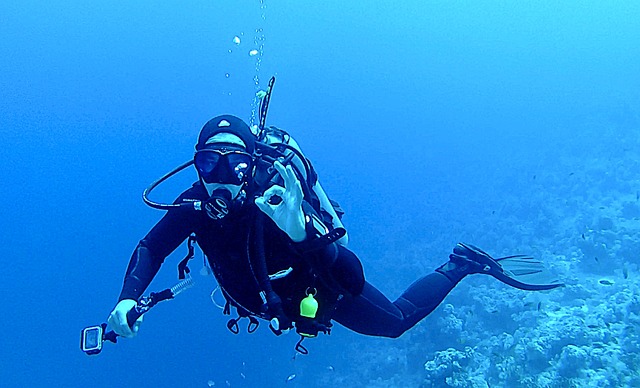The structures of the outer, middle and inner ear are first exposed to pressure changes. When diving, these are the most sensitive structures of the body when you scuba dive.
The hearing aid consists of an external auditory canal that is separated from the middle and inner ear by a thin membrane or eardrum. Professionally called the tympanic membrane. It is supported by the auditory ossicles, which transmit the membrane’s vibrations to the inner ear receptor organs, where they are converted into sound. The system is not hermetically sealed. It is connected to the pharynx and oral cavity by an internal canal (Eustachian tube). When the external pressure rises, whether from flying, hiking, or diving, the eardrum is pushed inward. The ossicles of the ears shift, putting pressure on the internal structures. With a further increase in pressure, the elongation of the eardrum becomes too large. Which causes filling of blood vessels, redness of the eardrum, filling of the middle ear cavity with blood with extremely severe pain, and eventually rupture of the eardrum. The pain then stops, and blood flows through the opening in the eardrum. But it also allows water, pollutants, and germs to enter the middle ear. Causing imbalance, hearing loss, tinnitus, and infection.
Infections of the middle and inner ear are not only excruciatingly painful but also dangerous due to the possibility of bacterial penetration into brain structures. To avoid all of this, equalize the pressure in the ears with a simplified Valsalva technique – blowing on a stuffy nose, swallowing, or chewing. It is one of the first things that each diver SCUBA or apnea learns. However, relatively normal nasal and Eustachian tube patency are also required for this. Mucus or catarrh, colds, allergic mucous membrane edema, or a more severe deviation of the nasal septum can all obstruct pressure equalization. It’s especially risky to attempt to force the pressure by blowing too forcefully because this might cause barotrauma of the ear.
The eardrum can perforate as a result of middle ear inflammation, but it can also happen as a result of a therapeutic breakthrough (myringotomy). If the pressure in the ears is difficult to equalize, diving should be skipped. Many people use decongestant nasal drops when they have a cold, sinusitis, or allergies. This is highly dangerous, and it should be avoided. As soon as the drops take effect, the pressure equalization is facilitated. But this is very deceptive because during diving the action of the drops can stop, the mucous membrane swells or catarrh accumulates, the canals close and the air is trapped in the sinuses and ears. The trapped air expands throughout the ascent, causing significant discomfort and damage to the structures in which it is trapped, particularly the inner ear and sinuses.
But what if perforation does occur? Or, if due to various diseases or injuries, surgeries are performed on the structures of the ear? How does the future of diving look like?
The first rule of diving is to avoid diving with a damaged eardrum! If a perforation occurs in the water, diving must be immediately stopped and surfaced accompanied by another diver, taking the decompression protocol into account. Eardrum perforation generally heals on its own after six to twelve weeks (small perforations even faster). If this does not occur, ear, throat, and nose experts (otorhinolaryngologists) can rebuild the eardrum with surgery (tympanoplasty), and the problem appears to be resolved. However, if a severe purulent infection of the middle and inner ear has formed, the perforations can be repeated numerous times. With more troublesome healing and easier re-burst each time. Most otorhinolaryngologists would then advise you to quit diving, which is likely the best advice. However, there are more advanced and complex surgical procedures for resolving these issues that result in hearing impairment (deafness) yet allow you to continue diving or working in hyperbaric circumstances.
Another issue is auditory bone surgery (stapedectomy), which does not always occur as a result of ear barotrauma and eardrum perforation, but for completely different reasons. This procedure does not leave behind the impossibility of equalizing the pressure with a modified Valsalva maneuver. It is essential to be patient.
Thank you for reading! Check out why you should not hold your breath when you dive here.
